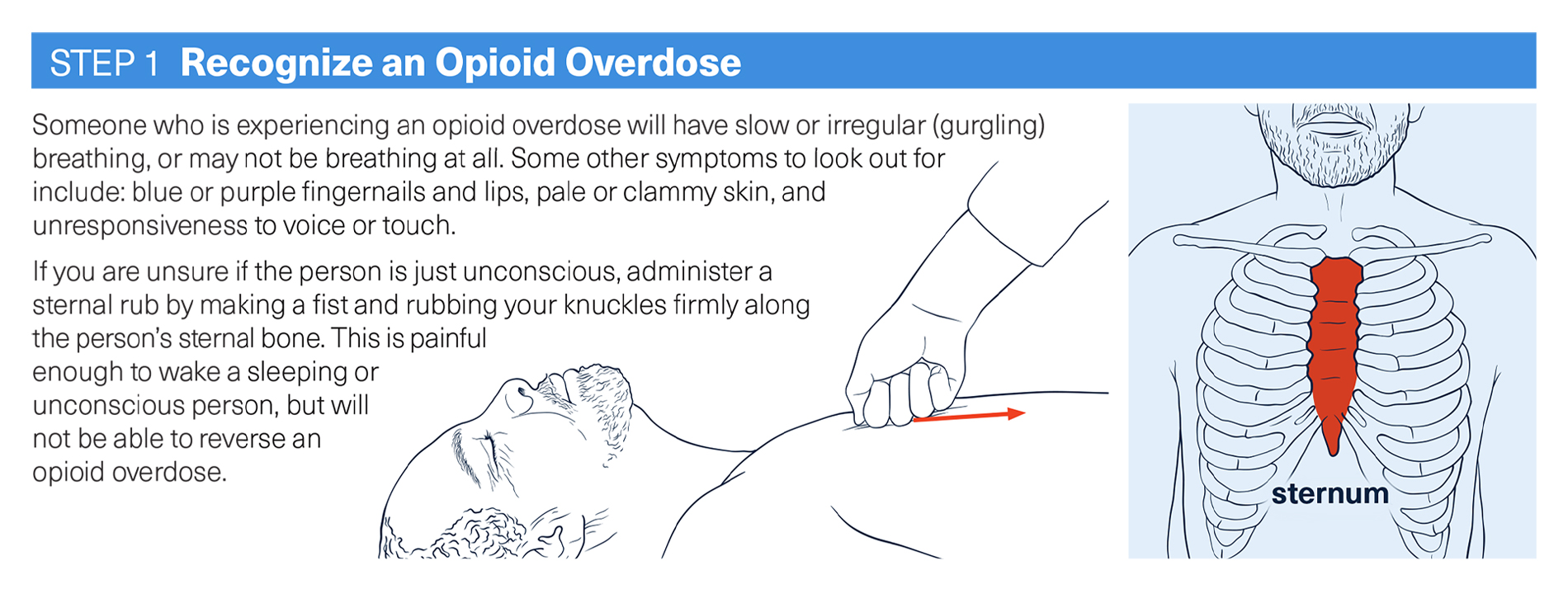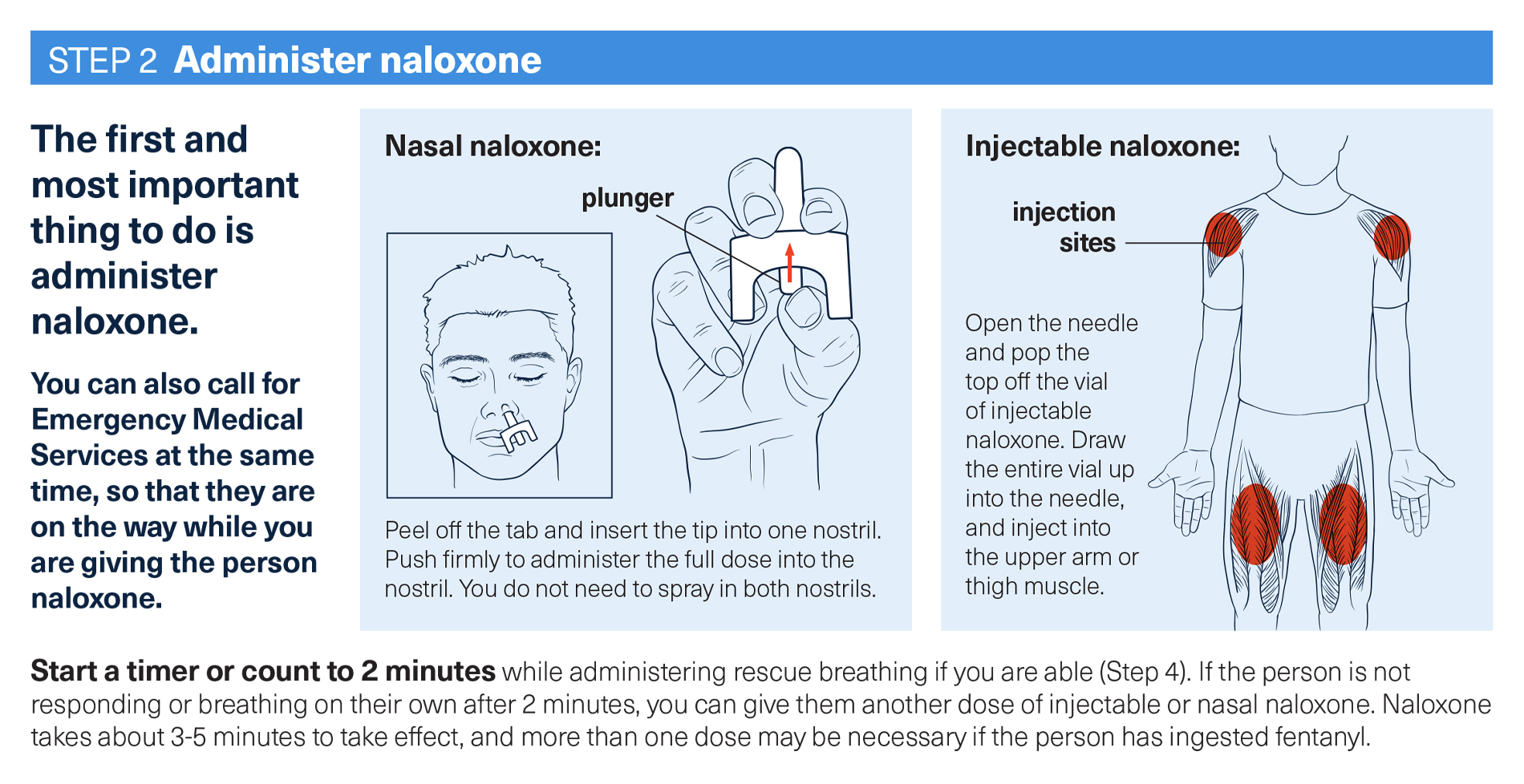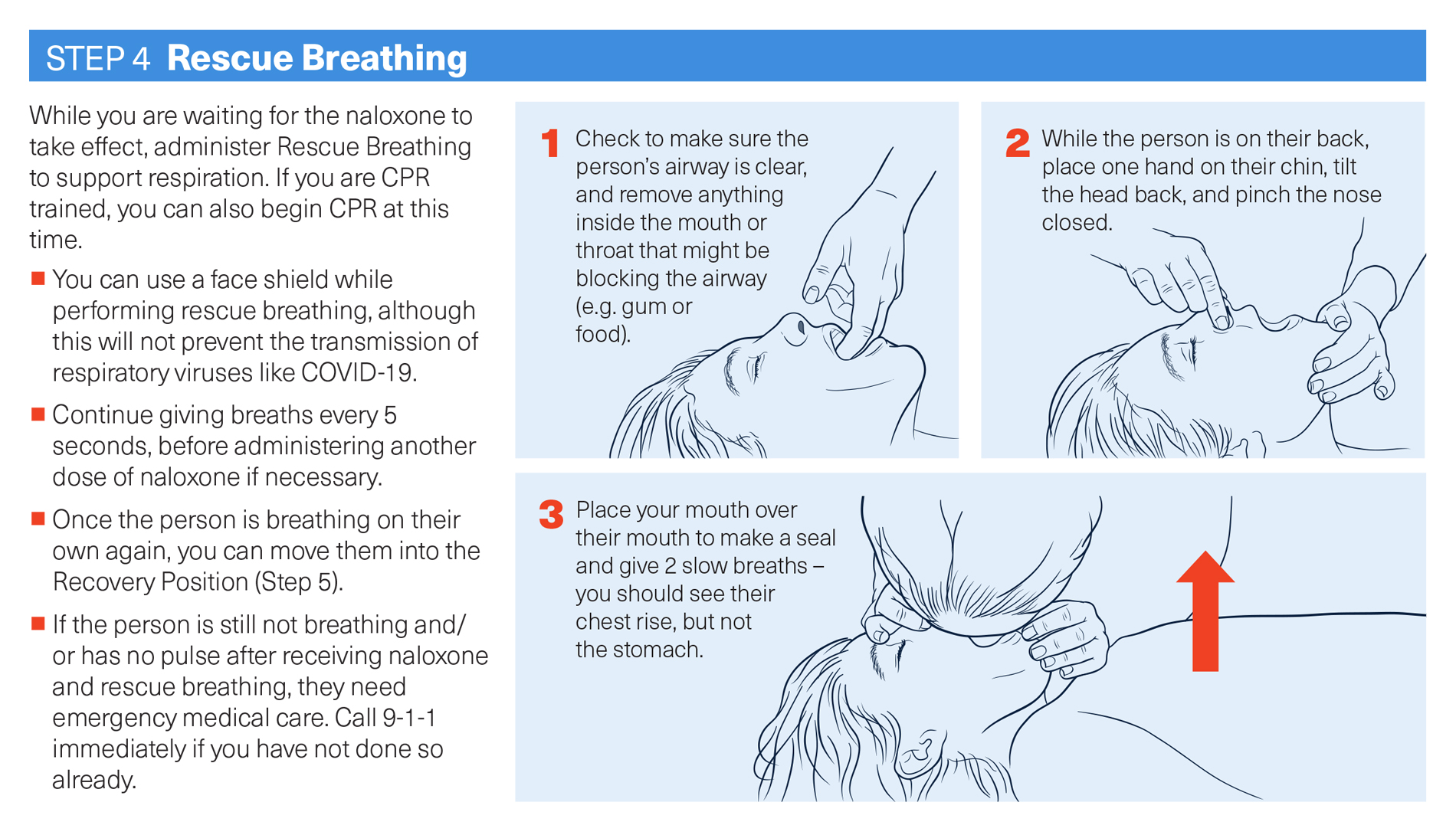How to Recognize & Respond to an Overdose
In order to be prepared to respond to an opioid-involved overdose with naloxone, you need to be able to recognize the signs of an overdose. Scroll down to review a step-by-step guide on recognizing and responding to an opioid-involved overdose. This guide is also available for download.
How do I know if someone is overdosing?
Someone who is overdosing may have any of the following signs and symptoms:
- Pale, clammy skin
- Pinpoint-sized pupils
- Not responding to voice or touch
- Slow heartbeat
- Slow, irregular (gurgling), or stopped breathing
- Blue or purple fingernails and lips
Someone who is overdosing on fentanyl may also have any of these symptoms plus “wooden chest syndrome” where the person’s chest muscles become rigid and paralyzed, which can cause them to sit straight upright instead of slumped over like during a typical overdose. Naloxone will reverse wooden chest syndrome once it starts to take effect, which then allows for CPR to be performed safely.
Step 1: Recognize an Opioid-involved Overdose

What do I do if I think someone is overdosing?
The first and most important thing to do is administer naloxone. You can also call for Emergency Medical Services at the same time, so that they are on the way while you are giving the person naloxone.

Will I get in trouble for calling 9-1-1 when someone is overdosing?
Illinois passed the Emergency Medical Services Access Law in 2012 to encourage people to contact EMS when someone experiences an overdose. This law is also called the “Good Samaritan” law, and protects people who either call 9-1-1 for someone experiencing an overdose or take someone experiencing an overdose directly to the emergency room. The law makes sure that both the person calling 9-1-1 and the person experiencing an overdose will not be prosecuted for possession of small amounts of illegal drugs.
However, it is important to know that the Good Samaritan law does not protect against prosecution for selling or distributing drugs to a person who dies of an overdose (drug-induced homicide). The Good Samaritan law also does not protect against arrest or charges for possession of drug paraphernalia.







